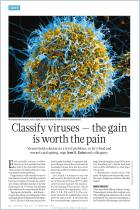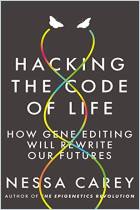加入 getAbstract 阅读摘要

加入 getAbstract 阅读摘要
Rowan Jacobsen
The World’s First Virus-Proof Cell, with Redesigned DNA, Is About to Meet the Test of Its Life
Biologists are building an organism that can shrug off any virus on the planet. Impervious human cells may be next
Scientific American, 2019
看看什么内容?
A genetically modified bacterial cell is impervious to infection from any and all viruses.
Recommendation
Genetic engineers are working on a bacterial cell that can thwart all viruses. They removed a key component of the cell’s protein-making apparatus required by both the bacterial host and the viral invader. The bacteria are fine, but any virus that gets in won’t find the tools it needs for infection. When a virus tries to infect, it simply gets stuck. These reprogrammed cells should be a boon for medical research and drug development. The article will inspire anyone interested in directed evolution and synthetic biology.
Summary
About the Author
Rowan Jacobsen is a journalist and author of several books, such as Shadows on the Gulf and Truffle Hound. His many magazine articles include “The Invulnerable Cell” in Scientific American’s July 2019 issue [identical with this article] and “Ghost Flowers,” published in February of that year. He was a 2017–2018 Knight Science Journalism Fellow at the Massachusetts Institute of Technology.

















Comment on this summary